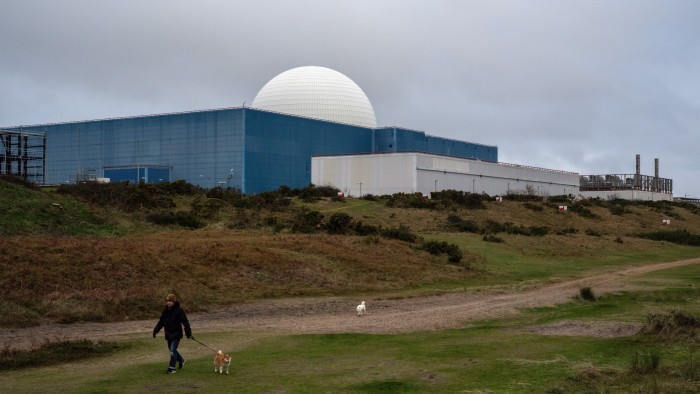Unlock the Editor’s Digest for free
Roula Khalaf, Editor of the FT, selects her favourite stories in this weekly newsletter.
There’s no mystery as to why enthusiasm is building for small modular reactors, or SMRs. After all, large nuclear power plants have made a habit, at least in the west, of blowing their initial budgets and running years late.
Take Sizewell C, a planned 3.2 gigawatt plant in eastern England. The scheme’s construction costs are expected to reach some £40bn, double a 2020 estimate, the FT reported this week.
In theory, SMRs — which are largely fabricated in factories — will reduce construction times, financing costs and many of the risks associated with building on site. Typically, the category includes reactors with an expected capacity of less than 300 megawatts, though larger plans exist too. In 2021-22, Rolls-Royce estimated a first 470MW SMR would cost £2.5bn, falling to about £2bn for future units.
Pint-sized reactors are also getting a boost from artificial intelligence, the growth of which is already reshaping the power sector. Technology giants including Amazon and Google parent Alphabet believe they can power energy-hungry data centres. The UK’s AI strategy includes the creation of an energy council that will consider how to invest in SMRs, among other things. Sweden, the Czech Republic and the US are also planning to deploy the technology.
Yet there are still many unknowns, which makes SMRs a difficult investment pitch. Most projects will not be ready until at least the 2030s. Interest rates and supply chain costs have already risen since Rolls-Royce put out its early cost estimate. Many nuclear project costs are site-specific and only become clear with planning and consenting processes, says Tom Betts at Aurora Energy Research.
Rolls-Royce is one of four companies vying for its technology to be chosen by the UK government, which plans to take a final decision on two SMRs by 2029. Given ongoing commercial negotiations, little up-to-date cost information has been disclosed.
External studies looking at SMRs’ levelised cost of energy — an indication of the cost of generating electricity over a plant’s lifetime — can be contradictory. But few dispute that SMRs will, at least at the beginning, be more expensive. A 2023 report by the consultancy Wood Mackenzie estimated that if SMR costs fell to about $120MW hours by 2030, they could be competitive with gigawatt-scale nuclear, as well as gas and coal plants.
In most cases, first-of-a-kind SMRs will be largely funded by governments. Private investors comfortable with nuclear should eventually follow. For now the sector remains too nascent in the west even for those with risky appetites, but as the wrinkles get ironed out, expect small reactors to acquire a much bigger profile.



